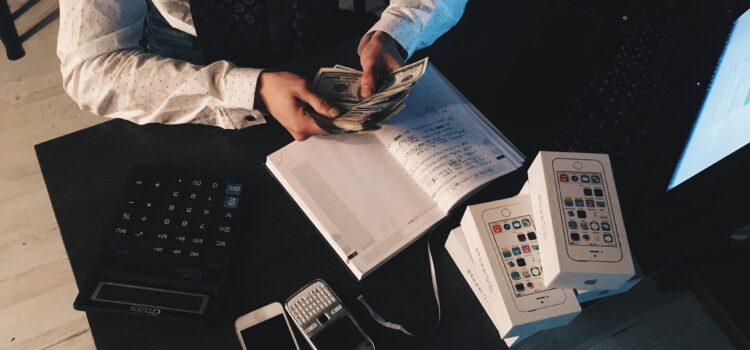

This article is an excerpt from the Shortform book guide to "The Barefoot Investor" by Scott Pape. Shortform has the world's best summaries and analyses of books you should be reading.
Like this article? Sign up for a free trial here .
What bank accounts does The Barefoot Investor recommend? What is the purpose of these accounts?
In The Barefoot Investor, Scott Pape recommends opening five bank accounts: two checking accounts, two savings accounts, and a backstop account. Besides helping you organize your income and spending, opening these accounts will save you money on banking fees.
Here are some recommendations for opening The Barefoot Investor bank accounts.
Bank Accounts According to The Barefoot Investor
In The Barefoot Investor, Scott Pape recommends setting up five bank accounts that allow you to avoid banking fees and start directing money toward five important purposes:
- Day-to-Day: basic expenses
- Treat: nonessentials that you enjoy
- Happy: long-term purchases you need time to save for
- Fire: pressing needs, like paying off debt or saving for a home
- Backstop: in case of emergency
Why It’s Important
There are many reasons you might currently be banking with a high-cost bank without realizing it—for instance, you might have an account at the same place that your parents did, or you might have received a bank account with your home loan.
But there’s good reason to switch: Switching to banks with no fees can save you thousands of dollars over the course of your lifetime. The average Australian household pays $489 per year in bank fees, some of the highest in the world.
Setting up The Barefoot Investor Bank Accounts
1. Set up two checking accounts with banks that offer online interfaces and don’t charge fees, including for ATM transactions. Pape recommends ING Orange Everyday Debit Cards, available in Australia. The only caveat is that you’ll need to deposit $1,000 into one of the accounts each month.
If you’re doing this with a spouse, you’ll share these accounts, with each of you having your own debit card. Pape and his wife have an agreement that they’re each allowed to spend up to $400 on anything they want from these accounts without asking the other for permission. They have to discuss spending anything above that amount.
2. Set up two high-interest savings accounts. Pape recommends using ING Savings Maximizers, which you can connect to your ING debit accounts. Label one “Happy” and one “Fire.”
3. Set up an account at a separate bank that you won’t be tempted to use, called your “Backstop” account. Pape recommends UBank USaver, a savings account in Australia with a high interest rate. Deposit $2,000 in it to start with. In Step 6, you’ll work to save three months of living expenses in this account.
Ideally, you’ll never have to touch the money in your Backstop account, but it’ll be there if you need it in an emergency or need money to fall back on. For example, if you lose your job and need time to find a new one, you can use the money in this account.
Managing The Barefoot Investor Bank Accounts
Once you’ve set up The Barefoot Investor bank accounts, the next step is to plan how you are going to distribute your take-home pay over those accounts. Creating a plan is the key to actually saving money. The simpler the plan, the easier it is to adhere to because when you don’t have to think as hard or make choices, saving becomes automatic. The Barefoot Investor recommends drawing up what he calls the “napkin” plan. Under this plan, you’ll put money from your take-home pay into three main categories:
- Blow
- Grow
- Backstop
Blow
This category consists of money that you’ll spend on a daily basis, as well as savings you’ll put away for longer-term purchases. Each month, your take-home pay will be deposited in your Day-to-Day account. Then, you’ll redirect some of it into your other accounts.
In general, aim to spend only 60 percent of your take-home pay on essentials, like bills, shelter, food, transportation, and insurance. This will leave you 40 percent to put toward other purposes.
Here’s how it’ll work—each time you’re paid, have your Day-to-Day account automatically direct:
- 10 percent to your Treat account.
- 10 percent to your Happy account.
- 20 percent to your Fire account.
10 Percent: Treat Account
You’ll use your Treat account for treating yourself regularly to whatever you like to buy. Maybe it’s pumpkin spice lattes, or new clothes.
Since it’s a debit account, it comes with its own card. Write Treat on it with a Sharpie so that you can tell it apart from your Day-to-Day spending card. Remember: Once you’ve used up your Treat dollars for the month, you’re not allowed to dip into other accounts for that purpose. You’ll have to wait until next month.
10 Percent: Happy Account
The money directed to your Happy account (a savings account) allows you to save for bigger expenses that you can’t buy with one paycheck, like a vacation. In other words, you’re saving to make a larger-than-normal purchase that brings happiness to your life.
Depending on what you’re saving for, you may want to increase or decrease the percentage you direct toward this account. For example, if you’re saving for a $1,200 plane ticket to Tokyo, and you want to buy it in three months, you’ll need to put $400 dollars in your Happy account for three months to reach that goal. If you normally only put $300 per month toward this account, you’ll have to modify your other monthly expenses. For example, you could divert a smaller portion of your take-home pay into your Treat account, putting the remainder in your Happy account instead.
20 Percent: Fire Account
You’ll use the money in this account to deal with “financial fires.” Financial fires are anything you want to concentrate a good chunk of money on paying for, such as eliminating credit card debt or student loans. It could also include larger expenses than you’d normally save for in your Happy account, such as a downpayment on a home.
Throughout this book, you’ll learn where to direct this money in different stages of your life.
Grow
This category consists of your long-term savings: your money for your super, as well as any investments you own, like rental properties or shares. In Steps 6 and 9, you’ll learn more about how to manage this category of savings.
Backstop
Backstop is an account that holds money separately from the Blow and Grow category. It is both its own spending category (like Blow and Grow) as well as a separate bank account. In Step 1, you should have deposited $2,000, but if you haven’t yet done so, find some creative ways to get that money in there, like working overtime or selling some belongings.
Because your Backstop money is at another bank, it should feel mostly off-limits, unless you need it in an emergency, like getting laid off from your job.

———End of Preview———
Like what you just read? Read the rest of the world's best book summary and analysis of Scott Pape's "The Barefoot Investor" at Shortform .
Here's what you'll find in our full The Barefoot Investor summary :
- A 10-step plan to eliminate debt and build wealth
- How you can increase your income
- Why you need to focus on cultivating long-term investments






